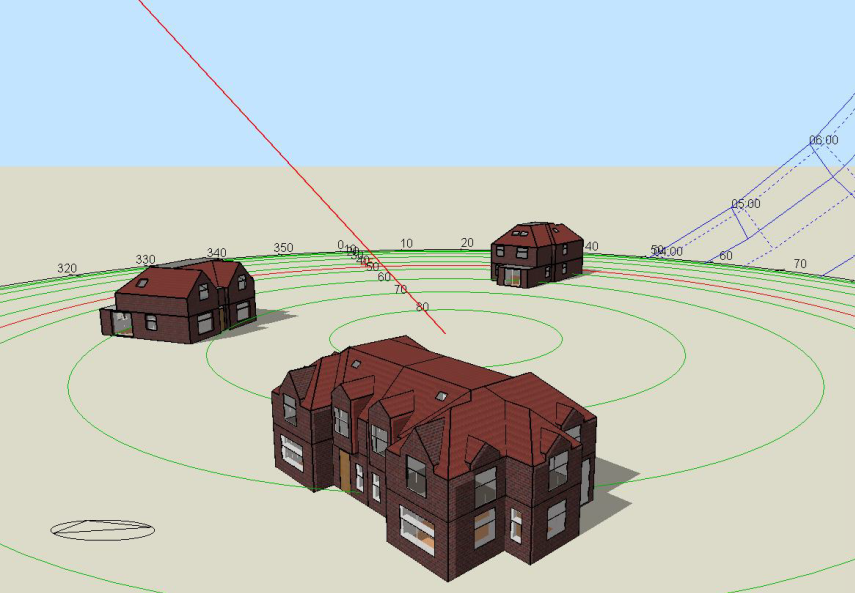
Following another long and hot summer in the UK, it's clear to see that temperatures continue to rise as the effects of global warming continue. Couple this with the fact that new homes grow increasingly airtight due to regulation, and the need for overheating calculations becomes apparent. CIBSE’s TM59 the Design Methodology for the Assessment of Overheating Risk in Homes remains critical for ensuring thermal comfort and compliance with Part O of the Building Regulations. CIBSE is now amending TM59 to reflect updated research, climate data, and practical feedback to better equip builders and design professionals for future challenges. Let’s unpack those changes and how Galaxy Technical Services can support you.
TM59 provides a consistent, dynamic thermal simulation methodology tailored to assess overheating risk in homes, including flats, dwellings, care facilities, and student accommodation, using factors like internal gains, ventilation, orientation, shading, and weather data.
Buildings are evaluated on two main criteria:
For mechanically ventilated homes, a fixed temperature test applies (e.g., max 26 °C for no more than 3% of occupied hours).
TM59 also integrates future-focused weather datasets such as DSY1 (2020s) and further scenarios (2050s, 2080s) for resilience planning
To mitigate an overheating risk in residential properties, it is important for low G values to be specified at design stage as this would positively impact the TM59 Dynamic analysis.

A G Value, also known as Total Solar Energy Transmittance, is a coefficient used to measure the transmittance of solar gain through glazing or how much heat is transmitted through a window from the sun’s rays.
The G Value is a scale between 0-1 where:
A high G Value of 1 represents the full transmittance of solar energy
A low G Value of 0 represents all solar energy is blocked by the glass.
CIBSE is refining TM59 across several key areas to better align with current science, policy progression, and industry realities:
1. Revised Night-Time Criterion
Replacing the fixed 26 °C threshold, proposals are in testing that consider nights exceeding a mean temperature possibly up to 28 °C. This shift aims to better reflect actual discomfort and mitigation strategies
2. Mandatory Use of Future Weather Files
The 2050s DSY1 (Design Summer Year 1) will become the minimum required weather profile for compliance testing, ensuring assessments consider warming climate conditions
3. Expanded Internal Gain Profiles
New profiles will include emerging occupancy patterns particularly home-office usage, ceiling fan effects, and night-time window-opening behaviour’s (including open internal doors, except bedroom doors)
4. Enhanced Climate Data Accessibility
A forthcoming digital tool aims to make future weather datasets more accessible and user-friendly for long-term system planning

At Galaxy Technical Services, we’re ahead of the curve refining our TM59 assessment offerings to align with these updates and help you achieve robust, future-proof solutions:
Our dynamic thermal modelling services now include:
Use of 2050s DSY1 as standard (and longer-term DSYs on request)
Applications of refined night-time criteria and thresholds
Home-office gain profiles and ceiling fan modelling
Realistic window-opening and internal door strategies
We don’t just identify overheating risks, we design solutions:
Passive strategies: shading devices, optimized glazing, air-movement design
Active strategies: ceiling fans, MVHR systems, thermal mass utilisation
Case study inspired adjustments (e.g., side-hung windows, adjustable blinds, openable glazing)
Our detailed TM59 reports include:
Clear pass/fail analyses against updated TM59 criteria
Climate-resilient weather scenarios and gain profiles
Visual heat maps and mitigation validation
Maintenance guidelines for shading and ventilation components crucial, as TM59 emphasizes that mitigation must be installed and maintained
With TM59 likely to influence the Future Homes Standard (due 2025), Galaxy can guide long-term planning:
Integration with upcoming Part O compliance requirements
Strategic use of future weather projections and risk resilience tools
Ensuring designs are both regulatory-compliant and climate-secure
The TM59 update is more than a regulatory tweak, it’s a shift toward a climate-aware, occupant-focused approach to thermal comfort. Galaxy Technical Services stands ready to equip designers, developers, and homeowners with robust, forward-looking TM59 assessments, mitigation strategies, and compliance documentation.
Ready to make sure your next project meets expectations using products that are cost effective and readily available and also tying the specification in with the SAP calculation which often conflicts with the overheating calculation, then reach out to Galaxy Technical Services.